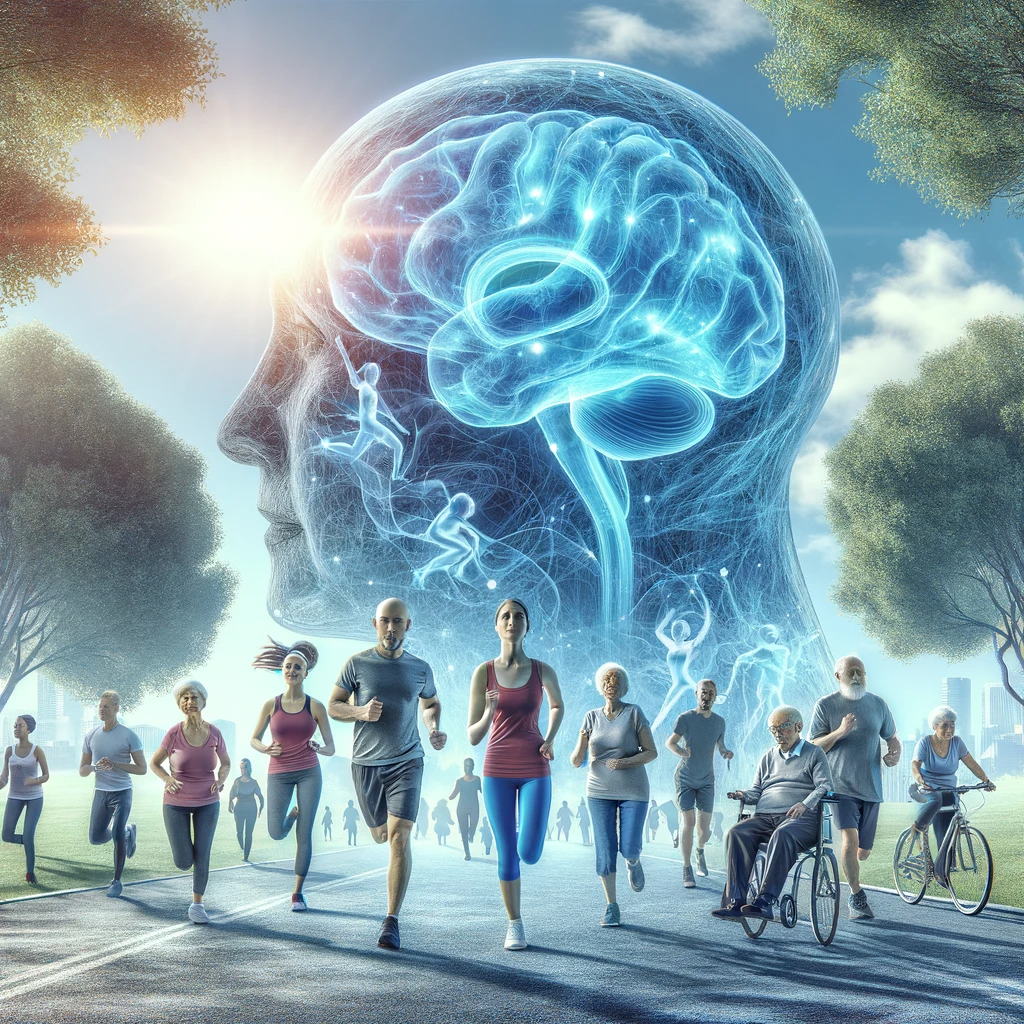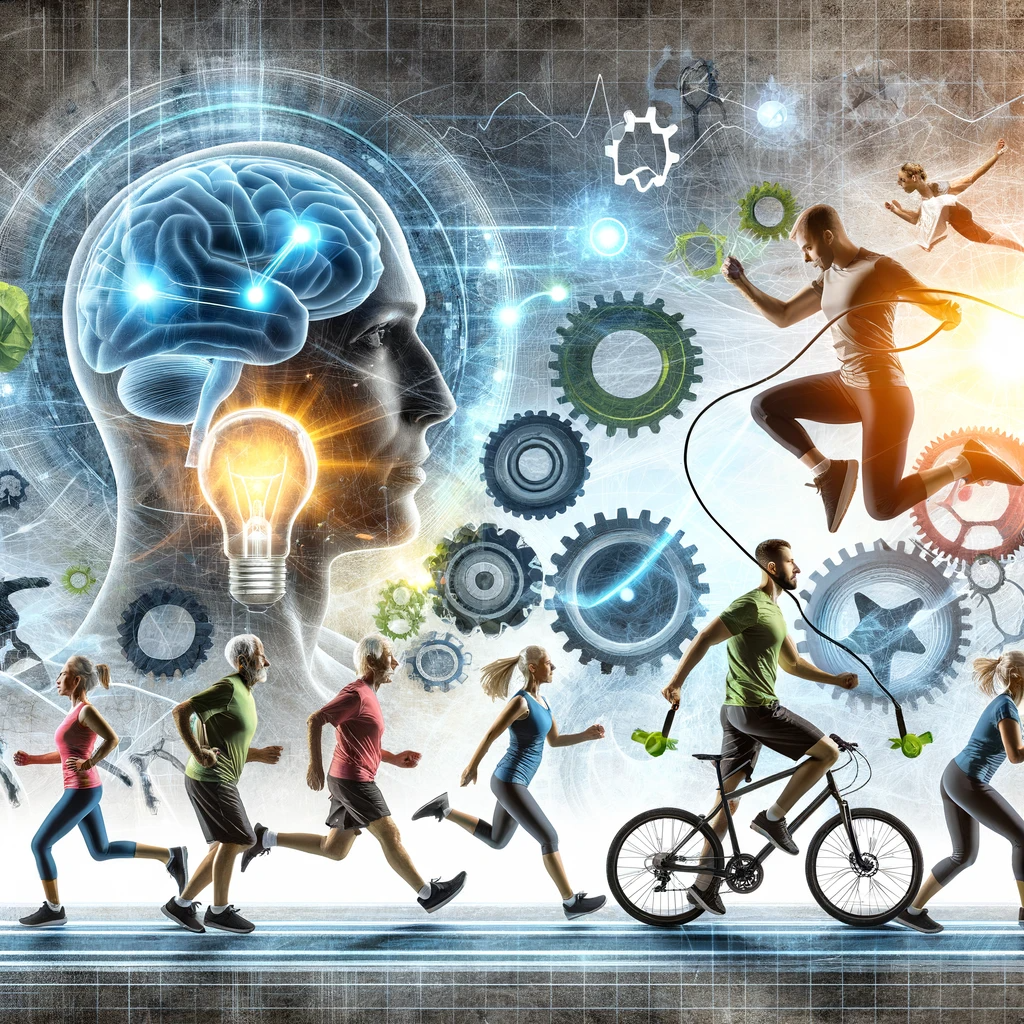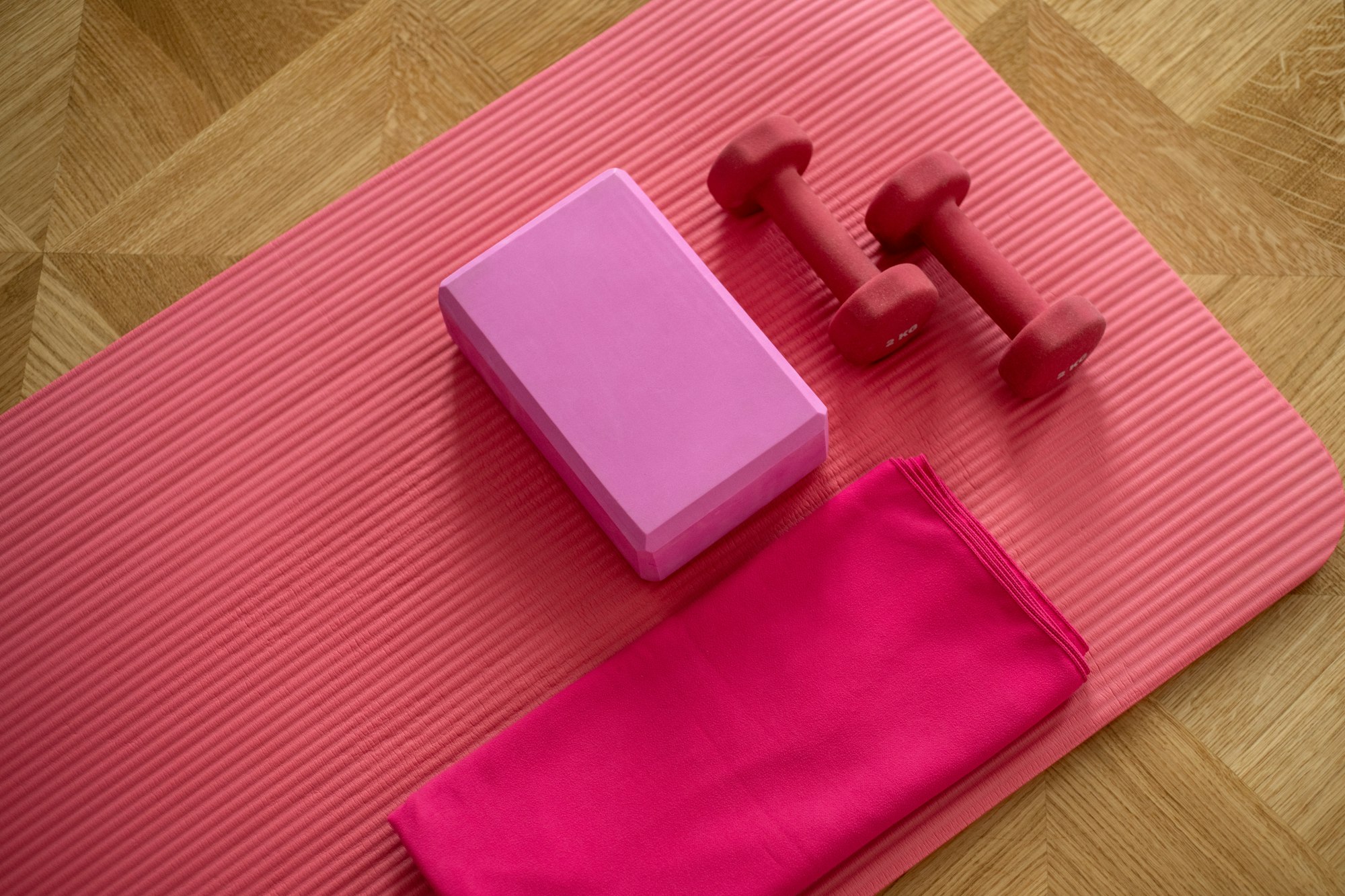Exercise for Brain Health: Preventing Dementia through Physical Activity
Explore the vital role of exercise in enhancing brain health and preventing dementia. Discover how tailored physical activities, from aerobic exercises to mind-body techniques, contribute to cognitive function. Learn about effective exercise regimens, to maintain brain fitness.

In the quest to maintain brain health and combat neurological conditions like dementia, exercise emerges as a powerful tool. This article explores the critical role of physical activity in enhancing brain fitness and delaying the onset of dementia. By integrating exercise into daily life and adhering to government guidelines, individuals can significantly contribute to their neurological well-being.
Exercise and Brain Health: Unveiling the Science
Physical activity goes beyond enhancing physical wellness; it plays a pivotal role in sustaining and improving brain health. In this era, where cognitive disorders like dementia pose a growing concern, regular exercise emerges as a powerful, preventive tool.
The Cognitive Benefits of Regular Exercise
Exercise has a profound impact on cognitive function. Studies have consistently shown that engaging in physical activity can lead to improved memory, enhanced concentration, and sharper problem-solving skills. This is attributed to the fact that exercise stimulates the production of neurotrophic factors, which are essential for brain cell growth and survival.
Exercise's Role in Dementia Prevention
One of the most groundbreaking discoveries in recent years is the link between regular exercise and a reduced risk of dementia. Physical activity is thought to combat dementia in several ways:
Increasing Blood Flow: Exercise improves blood circulation to the brain, ensuring a steady supply of oxygen and nutrients, which are crucial for brain health.
Reducing Inflammation: Chronic inflammation is a known risk factor for cognitive decline. Exercise helps in reducing inflammation levels in the body, including the brain.
Enhancing Neuroplasticity: Regular physical activity boosts neuroplasticity, the brain's ability to form new neural connections, which is vital for learning and memory.

Enhancing Mental Agility Through Exercise
Mental agility – the ability to think quickly and clearly – is another facet of cognitive health that benefits from exercise. Aerobic exercises, in particular, have been found to enhance mental agility by improving processing speed and executive function.
The Science Behind the Benefits
The benefits of exercise on brain health are underpinned by several biological mechanisms:
Neurogenesis: Exercise stimulates the growth of new neurons, particularly in the hippocampus, a region critical for memory and learning.
Increased Neurotransmitter Levels: Physical activity boosts the levels of neurotransmitters like serotonin and dopamine, which play key roles in mood regulation and cognitive function.
Hormonal Balance: Exercise helps in balancing hormones that affect brain health, such as cortisol, the stress hormone, which can be detrimental in high levels.
In summary, the relationship between exercise and brain health is multifaceted and scientifically substantiated. Regular physical activity not only serves as a cornerstone for physical fitness but also as a crucial element in maintaining and enhancing cognitive function, preventing dementia, and ensuring mental agility. As such, incorporating exercise into daily routines is a smart strategy for anyone looking to preserve and boost their brain health.
What is the Best Exercise to Improve Brain Function?
Exercise Choices and Modalities: Finding Your Perfect Match
The realm of physical activity is as diverse as the individuals who engage in it. Recognizing that one size does not fit all in exercise, it's essential to explore various options to find what resonates with you personally.
Gym Workouts: Customized Fitness Routines
Gym workouts offer a structured environment with a range of equipment catering to different fitness goals. Whether it's weightlifting for strength, treadmills for cardio, or group classes for motivation, gyms provide a versatile setting for customized fitness routines.
Outdoor Activities: Nature’s Gym
For those who prefer fresh air and natural scenery, outdoor activities like hiking, cycling, or running offer an excellent alternative. These activities not only provide physical benefits but also contribute to mental well-being, offering a sensory experience that indoor workouts may lack.
Mind-Body Exercises: Holistic Approach to Fitness
Yoga, Pilates, and Tai Chi are examples of mind-body exercises that emphasize a holistic approach to fitness. These modalities focus on strength, flexibility, and mental clarity, making them ideal for those seeking a balanced regimen that nurtures both body and mind.
High-Intensity Interval Training (HIIT): Time-Efficient Workouts
For individuals with a busy schedule, HIIT offers an effective, time-efficient workout option. These sessions involve short bursts of intense exercise followed by brief rest periods, making them highly effective for improving cardiovascular health and metabolic rate.

Aquatic Exercises: Low-Impact Fitness
Swimming and water aerobics are excellent choices for low-impact exercise, particularly beneficial for older adults or those with joint issues. The buoyancy of water reduces stress on the body, making it a safe option for maintaining fitness without strain.
Dance-Based Workouts: Fun and Energetic
Dance-based workouts, such as Zumba or salsa classes, combine fitness with fun. They are perfect for those who enjoy rhythmic exercise and seek an engaging, energetic way to stay in shape.
Sports: Competitive and Team-Based Exercise
Participating in sports like basketball, soccer, or tennis offers a competitive edge to exercise. Sports encourage teamwork and strategy, making them a great choice for those who thrive in a team environment and seek a more dynamic form of physical activity.
Home Workouts: Convenient and Flexible
With the rise of online fitness programs and apps, home workouts have become increasingly popular. They offer convenience and flexibility, ideal for those who prefer exercising in the comfort of their own space.
From gym enthusiasts to outdoor adventurers, from yoga practitioners to HIIT aficionados, the world of exercise is rich with choices and modalities. Understanding these diverse options helps in crafting an exercise regime that is not only effective but also enjoyable and sustainable. Ultimately, the best exercise is the one that you will consistently engage in, bringing benefits to both your physical and mental health.
Neuroplasticity Training Improves brain Health
Implementing Effective Exercise Regimens for Optimal Brain Health
Developing a consistent and well-rounded exercise regimen is crucial for maximizing its cognitive benefits. While occasional physical activity is beneficial, a regular and diverse exercise routine is key to enhancing brain fitness.
Establishing Regularity in Exercise
Consistency is the cornerstone of any effective exercise regimen. Regular physical activity is shown to have a cumulative positive effect on brain health. To establish a regular exercise habit:
Set a Schedule: Dedicate specific times for exercise each week. Consistency in timing helps in forming a lasting habit.
Start Small: Begin with manageable sessions and gradually increase intensity and duration to avoid burnout.
Track Progress: Keeping a record of your exercise routine can motivate and help maintain regularity.
Balancing Different Types of Exercise
A balanced exercise regimen that includes a variety of activities is more beneficial for brain health than a monotonous routine. Different types of exercises contribute to brain health in various ways:
Aerobic Exercises: Activities like running, cycling, or swimming are excellent for improving cardiovascular health, which in turn enhances brain function.
Strength Training: Weight lifting and resistance exercises are not only good for muscles but also for cognitive health, as they can improve focus and executive function.
Flexibility and Balance Exercises: Yoga and Pilates, known for improving flexibility and balance, also aid in stress reduction and mental clarity.

Incorporating Cognitive Challenges
Exercises that also engage the mind, such as dance or sports that require strategy and coordination, can further enhance cognitive benefits. These activities stimulate the brain in unique ways, improving memory and problem-solving skills.
Adapting to Personal Needs and Preferences
An effective exercise regimen should align with personal fitness levels, interests, and goals. Tailoring your routine ensures sustainability and enjoyment, crucial factors in maintaining regular physical activity.
Listen to Your Body: Adjust the intensity and type of exercise according to your body's responses.
Explore New Activities: Trying new forms of exercise can keep the routine interesting and challenging for the brain.
Consider Professional Guidance: A fitness trainer or a physical therapist can provide personalized advice suited to your health and fitness goals.
Understanding the Role of Rest and Recovery
Rest and recovery are as important as the exercise itself. Over-exercising can lead to burnout and injury, counterproductive to brain health. Incorporate rest days and ensure adequate sleep to maximize the benefits of your exercise regimen.
Implementing an effective exercise regimen for brain health involves more than sporadic workouts; it requires a strategic approach that combines regularity, variety, and personalization. By developing a balanced and consistent routine, you can harness the full cognitive benefits of physical activity, contributing significantly to your overall brain fitness and well-being.
Brain exercises and brain volume
Government Recommendations for Exercise: A Comprehensive Overview
Governments and health organizations globally have established exercise guidelines to promote physical health and well-being among the population. These recommendations provide a framework for the amount, intensity, and type of physical activity needed across different age groups.
General Guidelines for Adults
For the general adult population, the recommended amount of exercise includes:
Aerobic Activity: At least 150 minutes of moderate-intensity aerobic activity per week, such as brisk walking, or 75 minutes of vigorous-intensity activity, like running. Alternatively, a combination of moderate and vigorous activity can be undertaken.
Muscle-Strengthening: Activities that involve all major muscle groups should be done on two or more days a week. Examples include lifting weights, yoga, or heavy gardening.
Guidelines for Older Adults
For adults aged 65 and older, exercise recommendations focus on maintaining balance and preventing falls, in addition to the general adult guidelines:
Balance Training: Activities that improve balance, such as tai chi or simple balance exercises, should be included, especially for those at risk of falls.
Muscle-Strengthening and Aerobic Activity: Continuation of muscle-strengthening and aerobic activities is advised, with an emphasis on maintaining or improving functional ability.
Recommendations for Children and Adolescents
Children and adolescents (ages 6-17) require more physical activity for optimal growth and development:
Daily Physical Activity: At least 60 minutes of moderate-to-vigorous physical activity daily. Most of this should be aerobic, with activities like running, swimming, or cycling.
Muscle and Bone Strengthening: Activities that strengthen muscles and bones, such as jumping, running, or organized sports, should be included at least three days per week.
Exercise Guidelines for Preschool-Aged Children
Preschool-aged children (ages 3-5) are advised to:
Be Active Throughout the Day: Engage in various physical activities spread throughout the day for a total of at least three hours, with a focus on active play.
Special Considerations
Pregnant and Postpartum Women: Should engage in at least 150 minutes of moderate-intensity aerobic activity per week. Activities should be adapted as necessary, especially as the pregnancy progresses.
Individuals with Chronic Conditions or Disabilities: Tailored exercise plans are recommended to meet their specific needs and abilities, focusing on activities that are safe and beneficial for their condition.
These government recommendations for exercise are designed to cater to the diverse needs of the population, promoting physical health and well-being across all age groups. Adherence to these guidelines can lead to significant health benefits, including reduced risk of chronic diseases, improved mental health, and better overall quality of life. It's important to note that any new exercise regimen should begin with a consultation with a healthcare provider, especially for individuals with pre-existing health conditions.
How to Boost Your Brain Power
Brain Exercises increase Neuron Connections
Exercise for Brain Health: Preventing Dementia through Physical Activity
In the modern pursuit of health, exercise is not just a tool for physical fitness but a vital component for maintaining brain health. This article explores how integrating exercise into our daily lives, guided by government recommendations, can significantly bolster our neurological well-being and potentially delay or prevent the onset of dementia.
Exercise and Brain Health
Physical activity transcends mere physical wellness; it plays a pivotal role in sustaining and enhancing brain health. Regular exercise is linked to improved cognitive function, a lowered risk of dementia, and increased mental agility. This section delves into the scientific understanding of how exercise impacts brain function and preserves cognitive health.

Tailoring Exercise for Cognitive Benefits
Not all exercises are created equal when it comes to brain health. Some activities are especially potent in enhancing cognitive function. This section discusses various exercise choices known to boost brain health, including aerobic exercises that enhance blood flow to the brain, strength training that supports overall brain function, and mind-body exercises like yoga and tai chi that promote mental clarity and stress reduction.
Implementing Effective Exercise Regimens
To truly benefit brain fitness, a well-crafted exercise routine is essential. Beyond sporadic physical activity, a consistent and varied exercise regimen is necessary to maximize cognitive benefits. This section provides insights on developing a routine that balances different types of exercises, ensuring regular engagement and a holistic approach to brain health.
Government Guidelines on Exercise for Brain Health
Recognizing the connection between physical activity and cognitive health, governments and health organizations have issued specific exercise guidelines. This section presents these recommendations, focusing on the type, frequency, and intensity of exercise advised to support brain health and prevent cognitive decline.
Overcoming Barriers to Exercise for Brain Fitness
Incorporating regular exercise into one’s routine can be challenging. This section addresses common barriers such as time constraints, motivation issues, and physical limitations. Special attention is given to those at higher risk of cognitive decline, offering practical advice on overcoming these hurdles to maintain a consistent exercise regime.
The link between regular exercise and brain health, particularly in preventing dementia, is undeniable. Understanding and implementing exercise routines that cater to this aspect can significantly contribute to our long-term neurological health. As we continue to embrace the multifaceted benefits of exercise, it becomes increasingly clear that staying active is not just a choice but a necessity for maintaining brain fitness and overall well-being.
Exercise Advice for Special Populations
Addressing the exercise needs of special populations is crucial for ensuring that everyone can safely and effectively engage in physical activity. Older adults, pregnant women, and individuals with chronic conditions each have unique considerations that need to be addressed to maintain health and safety during exercise.
Older Adults
As we age, physical activity remains crucial, but the focus shifts towards maintaining mobility and preventing falls. For older adults, the exercise recommendations include:
Balance and Flexibility Exercises: Activities like tai chi or gentle yoga can improve balance and prevent falls.
Strength Training: Light to moderate strength training helps maintain muscle mass and bone density, which are crucial for overall health in older years.
Low-Impact Aerobic Activities: Walking, swimming, or cycling are excellent choices that are gentle on the joints.
It's important for older adults to start slowly and possibly consult with a healthcare provider to tailor an exercise plan that suits their individual health status.

Individuals with Chronic Conditions
For those with chronic conditions, such as heart disease, diabetes, or arthritis, exercise can play a key role in managing symptoms. However, it's important to tailor the exercise regimen to their specific needs:
Cardiovascular Exercises: For heart health, activities like walking, swimming, or cycling are recommended at a moderate intensity.
Strength Training: This can help manage diabetes by improving blood sugar control.
Range-of-Motion Activities: For arthritis, exercises that increase flexibility and range of motion, such as stretching and gentle yoga, are beneficial.
It is crucial for individuals with chronic conditions to work with healthcare professionals to develop an exercise plan that is safe and effective for their specific circumstances.
Conclusion
Exercise is a dynamic and essential element of a healthy lifestyle, adaptable to the needs and preferences of each individual. By understanding the diverse aspects of exercise, from personal preferences to special population considerations and government guidelines, everyone can create an enjoyable, sustainable, and health-beneficial exercise plan. The continuous discovery of exercise benefits underscores its value as a vital investment in long-term health and happiness. Whether you're an older adult, pregnant, or living with a chronic condition, there is an exercise path that's right for you, leading to improved health and well-being.
Our Resources section can help you find the information and tools that you need. We have courses, videos, checklists, guidebooks, cheat sheets, how-to guides and more.
You can get started by clicking on the link below. We know that taking care of a loved one is hard work, but with our help you can get the support that you need.
Click here to go to Resources Section now!
You might also like this article:





